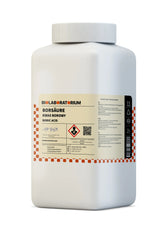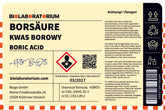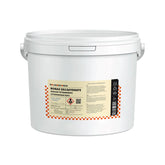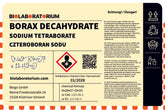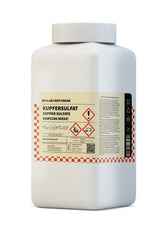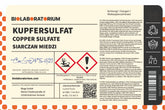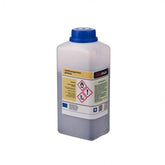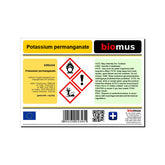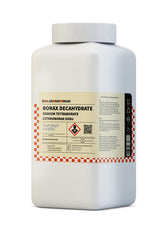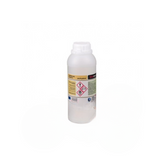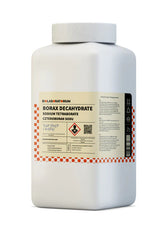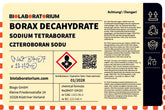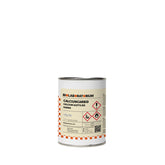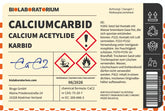Metallophthalein – A colored complexometric indicator for metal ion analysis
Metallophthalein is an important complexometric indicator that is widely used in chemical analysis. This colored indicator enables the precise determination of metal ions in solutions and plays a crucial role in performing complexometric titrations. In this blog post, we will take an in-depth look at the properties, applications, and advantages of metallophthalein as a complex indicator.
What is metallophthalein?
Metallophthalein is an organic dye used as an indicator in complex chemistry. The chemical name is 3,3'-bis(4-hydroxy-1-naphthyl)phthalide and the molecular formula is C₃₀H₂₀O₃. Metallophthalein is a phthalein derivative produced by the condensation of phthalic anhydride with 2-naphthol.
The special feature of metallophthalein is that it shows a characteristic color change in the presence of metal ions. When metallophthalein is added to a solution with metal ions, it forms a colored metal complex. The color of the complex depends on the respective metal ion and can vary from red through violet to blue. This color change enables the visual detection and quantification of the metal ions.
Complex formation and color change
The color change of metallophthalein is based on the formation of metal complexes. Metallophthalein has two hydroxy groups that can act as complexing agents. In the presence of metal ions such as calcium, magnesium, zinc, copper, or iron, metallophthalein forms stable chelate complexes.
Complex formation occurs through the coordination of metal ions to the oxygen atoms of the hydroxy groups. This changes the electronic properties of the dye, leading to a characteristic color change. Depending on the metal ion, a red, violet, or blue-colored metal complex is formed.
The intensity and nuance of the coloration depend on various factors:
- Type of metal ion
- Concentration of the metal ion
- pH value of the solution
- Complex stability
By varying these parameters, the color reaction can be specifically controlled and used for the qualitative and quantitative analysis of metal ions.
Application in complexometry
The main application area of metallophthalein is complexometric titration. Here, the color change of the indicator is used to detect the endpoint of a titration with a complexing agent such as EDTA.
In complexometry, the concentration of a metal ion is determined by titration with a complexing agent such as EDTA. Metallophthalein serves as an indicator that signals the endpoint of the titration. At the beginning of the titration, the metal ion forms a colored complex with Metallophthalein. When EDTA is added, it gradually removes the complexing agents from the metal ion until the endpoint is reached. At this point, the color of the indicator changes because no free metal ions remain.
The color change of Metallophthalein is very sharp and clear, enabling precise determination of the endpoint. Therefore, Metallophthalein is excellently suited as a complex indicator for a wide range of metal ions such as calcium, magnesium, zinc, copper, iron, and others.
Advantages of Metallophthalein
As a complexometric indicator, Metallophthalein offers several important advantages:
-
High sensitivity: Metallophthalein reacts to small amounts of metal ions with a distinct color change. This enables the determination of trace metals.
-
Broad application spectrum: The indicator is suitable for the analysis of a wide range of metal ions, including calcium, magnesium, zinc, copper, iron, and others.
-
Sharp color change: The color change of Metallophthalein is very distinct and clear, allowing for accurate determination of the titration endpoint.
-
Good solubility: Metallophthalein is well soluble in aqueous solutions, which facilitates practical handling.
-
High stability: The dye is chemically stable and can be stored over a long period without loss of quality.
-
Cost-effective: Metallophthalein is a comparatively inexpensive complex indicator that can be used economically.
These properties make Metallophthalein a valuable and versatile complex indicator in chemical analytics.
Summary
Metallophthalein is a powerful complexometric indicator that finds diverse applications in chemical analysis. Through its ability to form colored complexes with metal ions, it enables the precise determination of metal ion concentrations.
The advantages of Metallophthalein, such as high sensitivity, broad application spectrum, sharp color change, and good handling, make it an indispensable tool in complexometry. Whether in water analysis, material testing, or quality control – Metallophthalein is a reliable indicator for the analysis of metal ions.
With its use, metal contents can be determined quickly, cost-effectively, and precisely, making it a valuable tool in many chemical laboratories.

